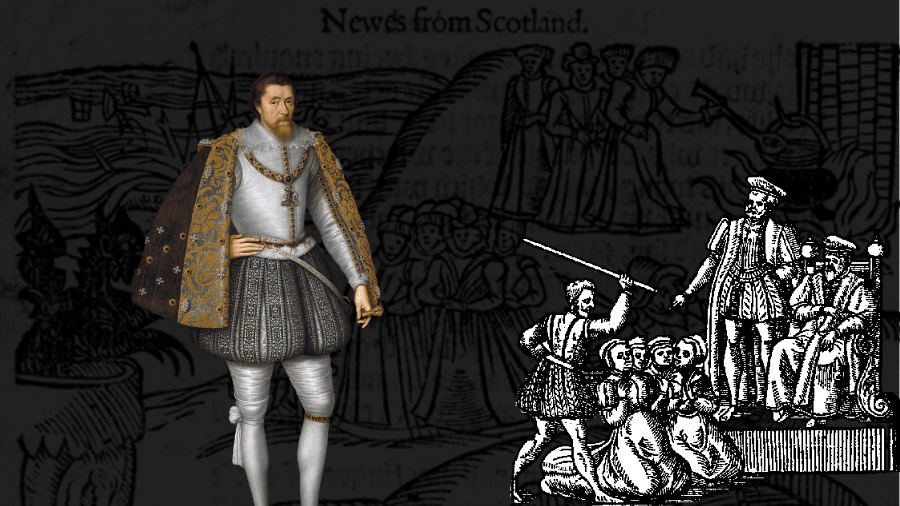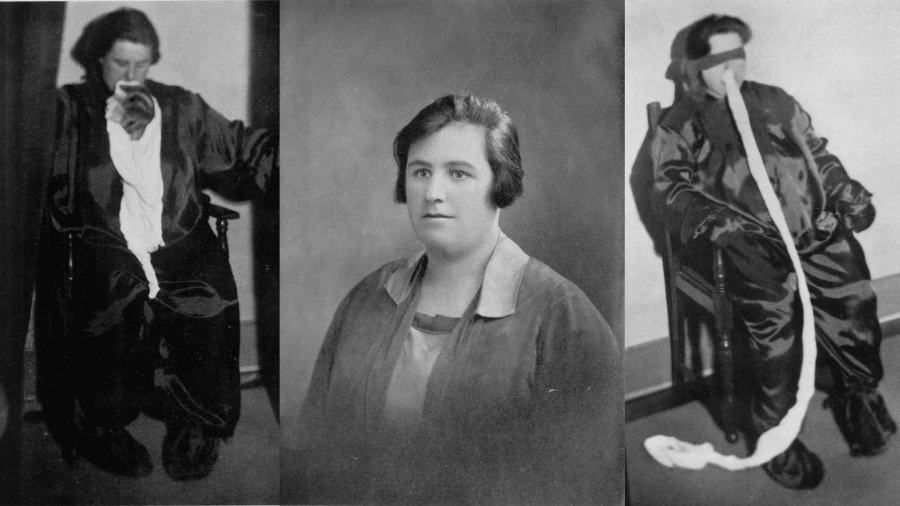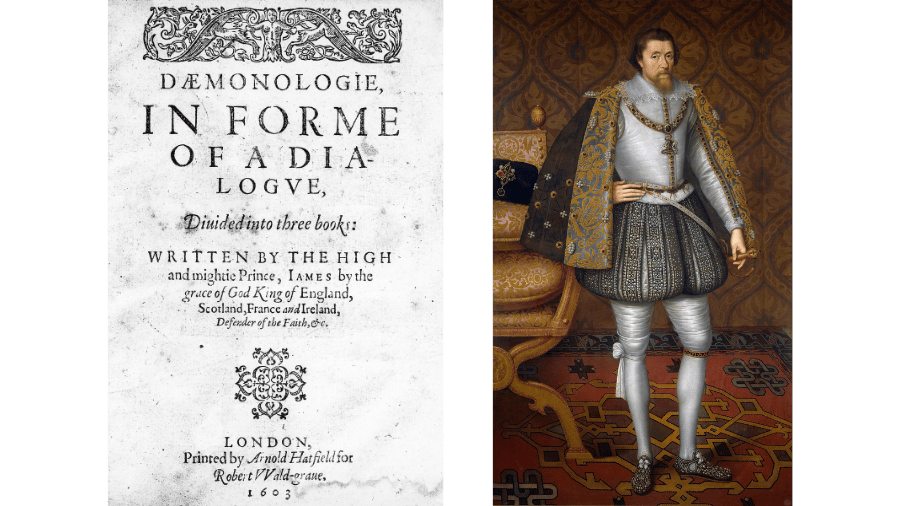The Crime of Witchcraft & King James VI | Edinburgh History
25th Mar 2025We often think of witch trials as long-ago paranoia, belonging to a different world or relegated to fiction. Even the popular series Outlander, set in the 18th century, dips into the stories of the Scottish Witch Trials.
But the history of witch trials in Scotland might be longer—and more recent—than you think. It spans centuries and though it began before he was born, King James VI played an important role.

History More Recent Than You Think
Keep the dates in mind when you hear grisly stories of witches and witchcraft. Scotland’s Witchcraft Act, which made sorcery a capital crime, was passed in 1563.
The last person to be burned as a witch in Scotland was Janet Horne. She was executed in 1727—that’s during the Georgian era, a period well-known for authors like Daniel Defoe and painters like Thomas Gainsborough.
Scotland’s ‘Last Witch,’ Helen Duncan, was sentenced to prison during World War II. In 1944, she was arrested and prosecuted under the Witchcraft Act of 1735, which was supposed to end witch trials as we knew them, but ultimately provided further loopholes for persecution.

Popular belief in magic and witchcraft dates back much further of course, back to pre-history. But it was from the mid-1500s—comparatively recent times—that witch mania gripped Europe and witch burnings suddenly went through the roof.
Was King James VI a Victim of Witchcraft?
There are all sorts of reasons why witch trials increased during the Early Modern period. Religious upheavals, political unrest, economic hardship, crop failures. Tense, frightened people tend to look for scapegoats.
In Scotland, the interest shown in witch hunting by King James VI in the 1590s accelerated things further.
James, whom you might know better for having commissioned the King James Bible, believed he was the victim of witchcraft. He was convinced a coven of witches in North Berwick had raised storms at sea in an attempt to sink his ship and drown him.
The king took a personal interest in the interrogations that followed. He even published a book about witch hunting called Daemonologie.

Geillis Duncan: More Than a Book Character
You might recognise the name Geillis Duncan if you’re familiar with the series, Outlander. In the fictional series, Geillis is accused of witchcraft and turns into something of a villain.
But Geillis Duncan is not only a fictional character. Author Diana Gabaldon used the name of a very real woman, the first accused at the beginning of the North Berwick Witch Trials.
She was only a young adult, possibly still a teenager, when her employer accused her of practicing witchcraft. He took it upon himself to...interrogate her. Listen to her real story below.
@mercattours Replying to @JustLaura Geillis Duncan was not just a fictional character! Many people recognise her name from the series, Outlander. But Geillis Duncan was a real victim of the Scottish Witch Trials. She was NOT a villain. A young woman, she was a servant in 1590 when she was accused of witchcraft and...’interrogated’ by her master. She implicated others (like Agnes Sampson and John Fian) in a forced confession. The Scottish Witch Trials were far worse than the well-known Salem Witch Trials: nearly 300 people were executed at Edinburgh Castle alone, whereas 19 were executed in Salem. We’re glad that Geillis Duncan has become a bit of a household name, but we also think it’s important to recognise and respect her real story as well. Please, join us this summer on a Witches: Trial & Truth tour to learn more about the real people accused of witchcraft in Scotland (and to hear centuries of myths dispelled). Tickets through our bio. ✨ [Video description: a 1-minute video exploring the Scottish Witch Trials and the story of Geillis Duncan, using animations and old documents to illustrate a voiceover. End description] #edinburgh #scotland #historytok #hiddenhistory #hiddengems #darkhistory #witchcraft #witchtrials #witchtok #outlander #geillisduncan ♬ original sound - Mercat Tours
The Devil at Loose in the World
All attempts to eradicate witchcraft only made things worse. Those suspected of sorcery were frequently tortured, leading to dubious confessions and other innocent people being identified as witches.
Those found guilty were strangled and burned in horrifying public spectacles which further increased people’s anxiety and paranoia about witchcraft. Soon, ordinary folk were seeing witches everywhere.
The Devil, it seemed, was at loose in the world. Christian society was under attack.
Scotland’s extraordinary ‘witch mania’ went on for more than a century, with panics gripping the country in the 1590s, the 1620s, the 1640s and again in the 1660s.
By the early 18th century, however, things were starting to change. The country was becoming more peaceful and stable, and its educated elite increasingly sceptical about witchcraft.
In 1735, Parliament finally passed an act repealing laws against witchcraft. And that marked the end of it, right? It was now impossible for those who still believed in witchcraft to pursue cases in court.
However, this act made it a crime to claim to have or use magical powers. And this was the law used to arrest Helen Duncan in 1944. The act was finally fully repealed in 1951.
Suddenly, witch trials don’t feel quite so far away.
Interested in learning more about ‘witches’ like Geillis Duncan and the other very real history of the Outlander series? Join us for an exclusive Edinburgh Outlander Experience tour on 26 and 27 April 2025. See the history and sites behind the books and TV series.

